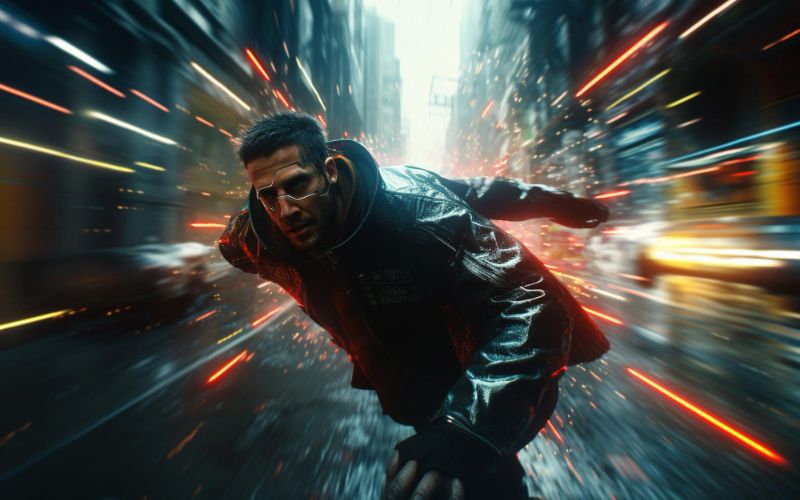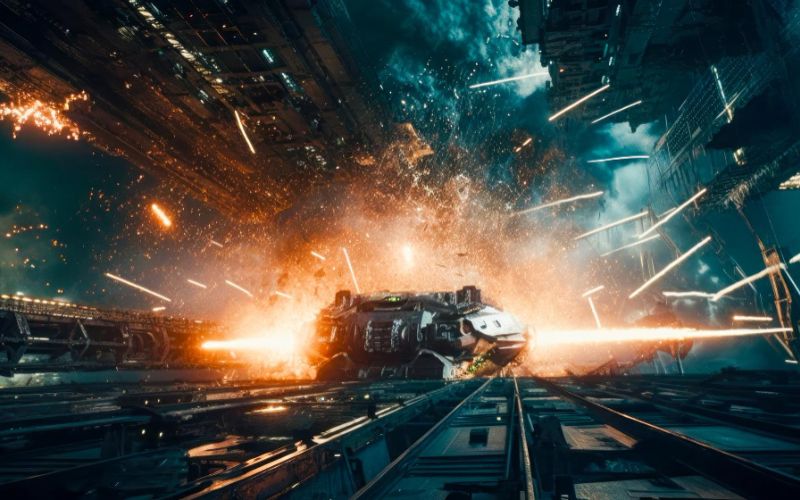Table of Contents
# What Do VFX Do?
# How Can You Learn All These In A VFX Animation Course?
# Are You Looking For VFX Training In Kolkata?
# Conclusion
By pushing the limits of our cinematic and interactive experiences, visual effects (VFX) have emerged as the primary force behind contemporary narrative. The way we view and interact with films, television shows, video games, and other media has been transformed by VFX artists thanks to their transformational talents.
These artists’ unique skill sets enable them to edit and enhance images in a stunning way, leading us to breathtaking places and giving the most amazing creatures life.
In this blog, we delve into the diverse capabilities of VFX, exploring the tasks and techniques that make it an indispensable part of the entertainment industry.
What Do VFX Do?
Visual effects (VFX) encompass a wide range of techniques and processes used to create or manipulate imagery in film, television, advertising, gaming, and other media.
Here are some specific tasks that VFX professionals undertake:
Special effects:
VFX artists create various special effects, such as explosions, fire, smoke, water simulations, and destruction sequences. These effects are often created digitally to ensure safety and control in production.
CGI (Computer-Generated Imagery):
VFX involves the creation of computer-generated elements and environments that seamlessly integrate with live-action footage. This includes generating virtual characters, creatures, vehicles, or entire worlds that appear realistic and interact with the real-world elements.
Matte painting:
VFX artists use digital techniques to create or enhance realistic backgrounds and landscapes. They can paint or composite elements to extend or alter existing sets, create imaginary environments, or recreate historical or futuristic settings.
Compositing:
VFX compositors bring together multiple elements, such as live-action footage, CGI, and visual effects, into a final image or sequence. They integrate these elements seamlessly, matching lighting, color, and perspective to create a cohesive and realistic visual composition.
Motion tracking:
VFX professionals use motion tracking techniques to analyze and match the movement of the camera in a live-action shot. This data is then used to integrate CGI or other elements into the scene, ensuring they move and interact realistically with the filmed footage.
Character animation:
VFX artists create and animate digital characters, whether it’s humanoid characters, fantastical creatures, or even anthropomorphic objects. They give these characters movement, emotion, and realistic behavior, enhancing their believability and expression.
Wire and rig removal:
In certain shots, wires, rigging, or other support structures may be visible. VFX artists can digitally remove these elements to make them appear as if they were never there, providing a seamless and polished final result.
Color grading and enhancement:
VFX professionals work on color grading, adjusting and enhancing the color, contrast, and overall look of footage to achieve a desired aesthetic or mood. They may also manipulate lighting effects and add filters or visual enhancements to improve the visual impact.
These are just a few examples of what VFX can do. The field of visual effects is vast and continually evolving, with new techniques and technologies emerging regularly to push the boundaries of what is possible in visual storytelling.
How Can You Learn All These In A VFX Animation Course?
VFX animation course are designed to provide comprehensive training in various aspects of visual effects.
While the specific curriculum and focus may vary between courses and institutions, here are some common ways in which you can learn the skills and knowledge necessary for a career in VFX:
Theoretical knowledge:
VFX courses typically begin by providing a solid foundation in the principles and theories of visual effects. This includes learning about the technical aspects of VFX, such as the physics of light, color theory, composition, and visual storytelling.
You’ll also study the history and evolution of VFX and gain an understanding of the industry standards and practices.
Software proficiency:
VFX courses often emphasize hands-on training with industry-standard software and tools. You’ll learn how to use software like Autodesk Maya, Adobe After Effects, Nuke, or Houdini, among others.
These courses teach you the technical skills required to create and manipulate visual effects, such as 3D modeling, texturing, animation, compositing, and more.
Project-based learning:
Many VFX courses incorporate project-based learning, where you work on real-world scenarios and assignments. This allows you to apply the concepts and techniques you’ve learned in a practical setting.
By working on projects individually or in teams, you gain valuable experience in problem-solving, collaborating, and delivering high-quality VFX work.
Specialized training:
Depending on your interests and career goals, VFX courses may offer specialization options. These could include areas such as character animation, matte painting, motion tracking, simulation, or compositing.
Specialized training allows you to focus on specific aspects of VFX that align with your interests and strengths.
Industry exposure:
Reputable VFX courses often provide opportunities for industry exposure and networking. This can include guest lectures by industry professionals, workshops, studio visits, or internships.
These experiences give you insights into the industry, allow you to learn from experts, and potentially create connections that can benefit your career.
Portfolio development:
Building a strong portfolio is crucial in the VFX industry. Many VFX courses dedicate time and guidance to help you develop and showcase your work effectively.
You’ll receive feedback and critique on your projects, learn how to present your work professionally, and curate a portfolio that demonstrates your skills and creativity to potential employers.

It’s important to note that while VFX courses provide valuable training, learning and mastering VFX skills often requires continuous practice, self-study, and keeping up with the latest industry trends and software updates. It’s a field that requires both technical expertise and creative problem-solving abilities, and ongoing learning and experimentation are key to staying relevant in this dynamic industry.
Are You Looking For VFX Training In Kolkata?
Let us ease your search for VFX training institute in Kolkata by suggesting to you the highly recommended VFX training institute in Kolkata, George Animatrix. George Animatrix has gained its excellence in this place with most students securing placements in most reputable companies with good salary packages.
Conclusion
The realm of visual effects is a captivating one, where imagination knows no bounds. Through the skilled hands of VFX artists, we are transported to awe-inspiring realms, witness breathtaking spectacles, and connect with characters that defy reality. From special effects to character animation, VFX offers a multitude of avenues for creative expression and technical mastery. With the right training and dedication, aspiring VFX professionals can embark on a journey that leads to the creation of unforgettable visual experiences. So, embrace the power of VFX and unlock a world where imagination reigns supreme.



